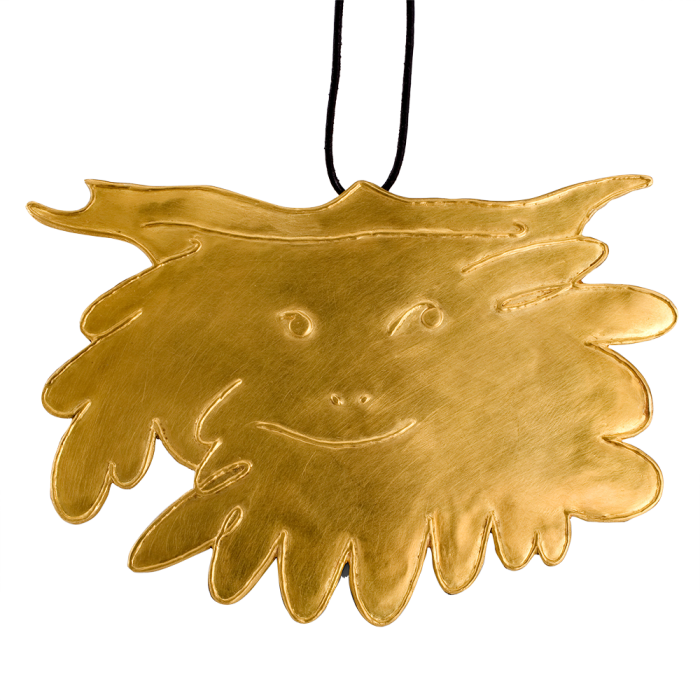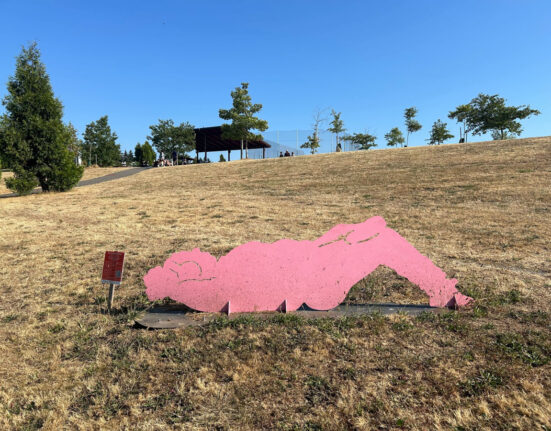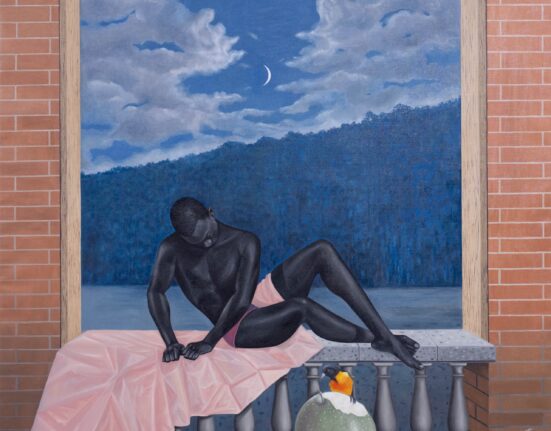Unlock the Editor’s Digest for free
Roula Khalaf, Editor of the FT, selects her favourite stories in this weekly newsletter.
A new exhibition in Florida will show pieces from a leading collection of artists’ jewellery alongside a large selection of paintings and sculptures by the same artists for the first time.
About 190 jewels by artists will feature in Artists’ Jewelry: From Cubism to Pop, the Diane Venet Collection at the Norton Museum of Art in West Palm Beach (April 12-October 5). These pieces will be displayed alongside 59 two- and three-dimensional artworks from the institution’s collection and five promised gifts. Artists include Roy Lichtenstein, Man Ray, Georges Braque and Louise Nevelson.
French collector Venet’s interest in artists’ jewellery began when the sculptor Bernar Venet proposed to her by placing a twisted bar of silver on her finger in 1985. Her now husband then gave gifts made by his artist friends, inspiring her to start collecting pieces herself. She now owns and wears artists’ jewels dating from the 1930s to the present day.
J Rachel Gustafson, chief curatorial operations and research officer at the Norton, hopes the new exhibition will prompt reconsideration of an artist’s jewellery within their larger body of work, as she says this is overlooked in art history teaching. “Maybe less omission and more inclusion in terms of the vastness of artists’ creativity . . . that would be success,” she says.
Venet’s favourite jewels are the unique pieces made for her by artist friends, including Robert Rauschenberg and Frank Stella. “The close relationship between me and the artist is very important because it gives the idea that it’s sentimental,” says Venet. “I’m not a gallerist — I never sell, I collect [out of] love.”
She says that while artworks are mostly made to be sold, an artist’s jewellery has tended to be made out of friendship or love. Gustafson adds that some female artists also made pieces for themselves.

Pablo Picasso’s ‘Le Grand Faune’

Niki de Saint Phalle’s ‘Nana Ange’
Venet says artists have typically made jewellery later in their lives, “accepting the challenge to change scale”. “Because making or deciding a piece of jewellery for an artist is not just doing in tiny what they do in large in their everyday work,” she says. She adds that not all artists can manage the change of skills required.
A 23-carat gold Pablo Picasso pendant, “Le Grand Faune” (1973), made by French goldsmith François Hugo, and two brooches will be shown alongside two of Picasso’s 1950s earthenware pieces with painted faces and the 1956 painting “L’Atelier” (The Workshop). “You actually will see the faces or the eyes of the figures that are both on the medallion and on the vessel,” says Gustafson. “So it’s a really nice combination to see that the gestural making of these artists can cross media.”
The museum will display Andy Warhol’s “Vesuvius 365” (1985), a colour lithograph on paper in its collection, for the first time, pairing it with the only wristwatch in Venet’s collection: Warhol’s black steel Times 5 (1987).

Jean Cocteau’s ‘Madame’

Arman’s ‘Inclusion pendant’
Gustafson hopes the exhibition will propel visitors to question why artists’ work in jewellery is lesser known. “I hope a visitor will see that there’s this relationship that is happening where an artist is thinking of a form or colour or a composition in perhaps what we would call the fine arts . . . and now it’s translated into jewellery, which is more traditionally linked with craft,” she says.
“And so because of that, especially in art historical circles, perhaps there’s not as much value placed on it. But the reality is, these artists are using the same modes of creativity to create two different realisations.”

Gustafson’s feminist art history interpretation of why artists’ jewellery has been undervalued is because jewellery is something predominantly worn by women in the past few centuries. “You have to ask yourself: how much has the patriarchy embedded [itself] into our ways of thinking that a jewellery piece is frivolous?” she says, adding that jewellery is usually bought by women, or by a man seeking a woman’s affection. She hopes that pairing pieces with paintings and sculptures means the jewellery will not be considered “less than”.
Following an introduction featuring a sound piece created by the Italian artist Sheila Concari, the exhibition will be arranged into seven sections in which the jewellery and artworks are grouped by an art historical movement or theme. The museum will be treated as “the body for the artwork”, says Gustafson.
Rather than being installed at typical viewing height, some paintings will be hung close to the ceiling to mimic the wearing of earrings. Others will appear to be hanging from rope. “So a painting now becomes a pendant on the body that is the museum,” says Gustafson.
Jewellery will be arranged on table cases that resemble dressing tables. A selection of pieces including the Warhol watch will be enclosed in acrylic but with space that allows a visitor to slide their hand underneath to get a sense of how it would look to wear the piece.
The experience of curating the show has changed Gustafson’s view of jewellery, which she now believes is “unequivocally” art. “I will never look at jewellery the same way after this exhibition,” she says. “I personally do not wear a lot of it, so I will be very much more intentional about what I put on and explore as my own form of creative expression as a wearer.”







